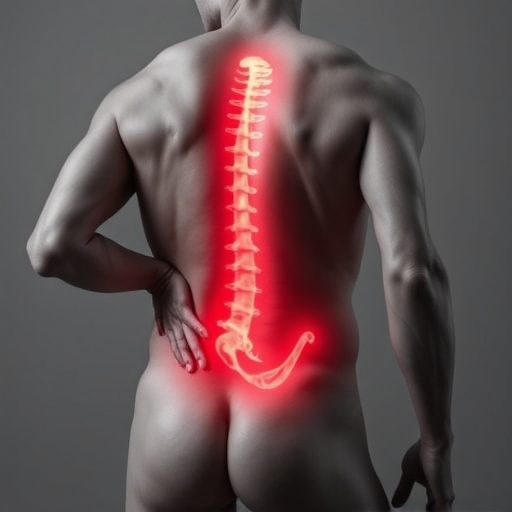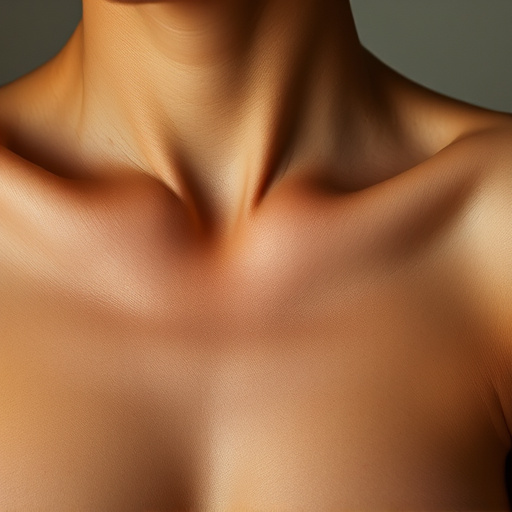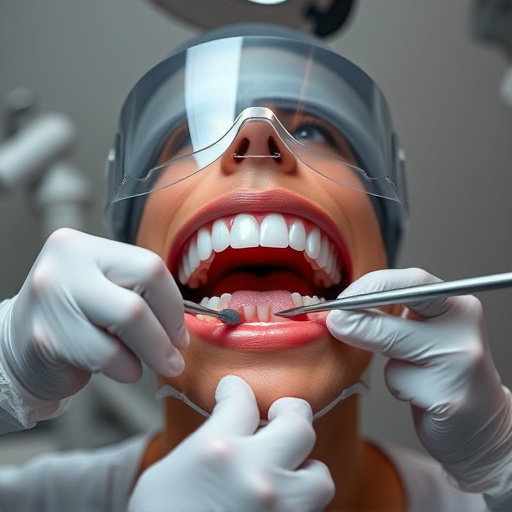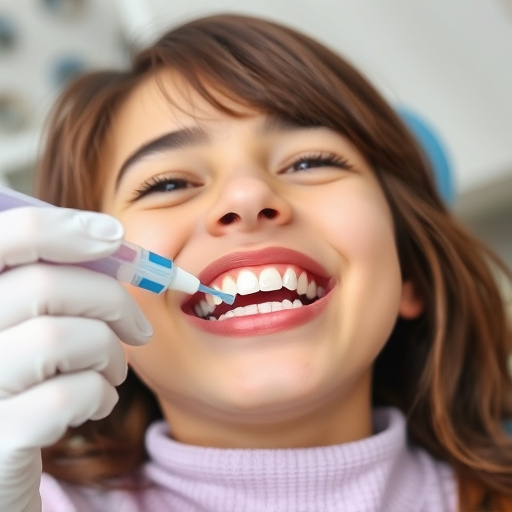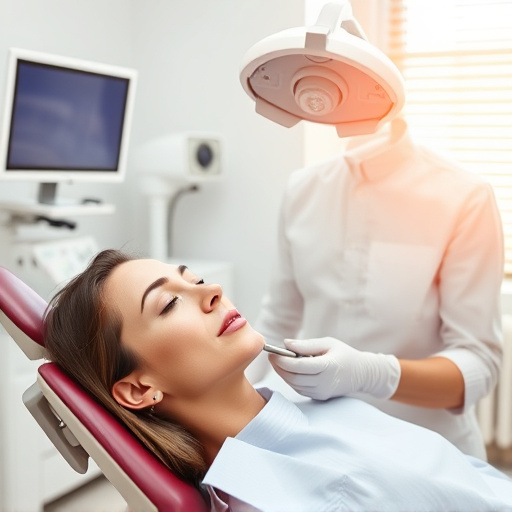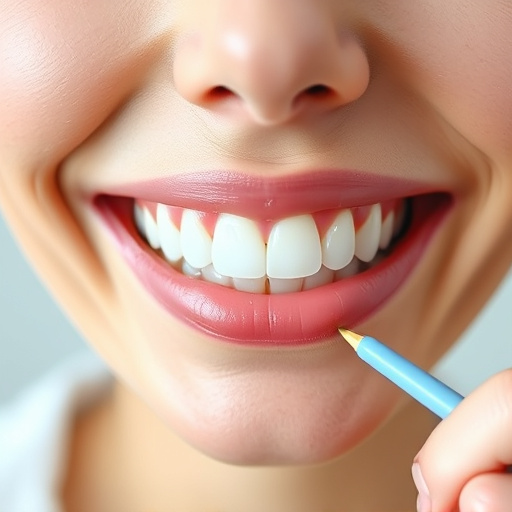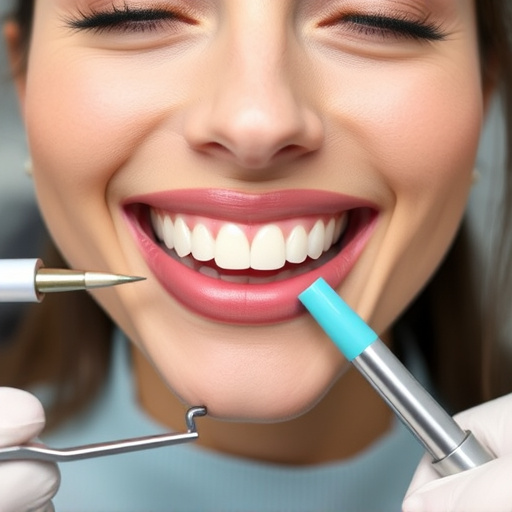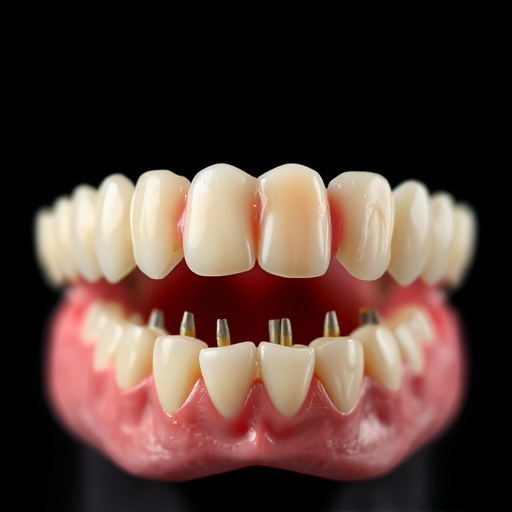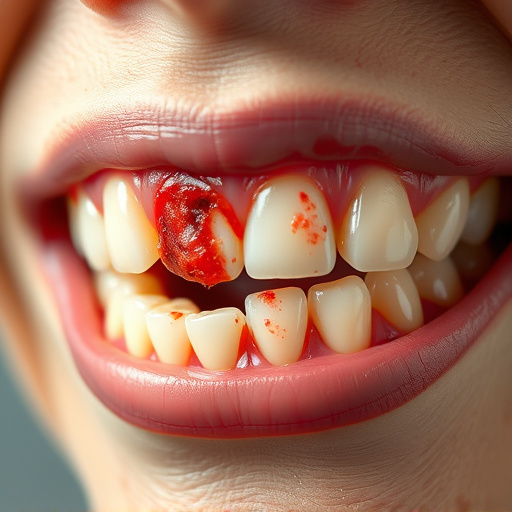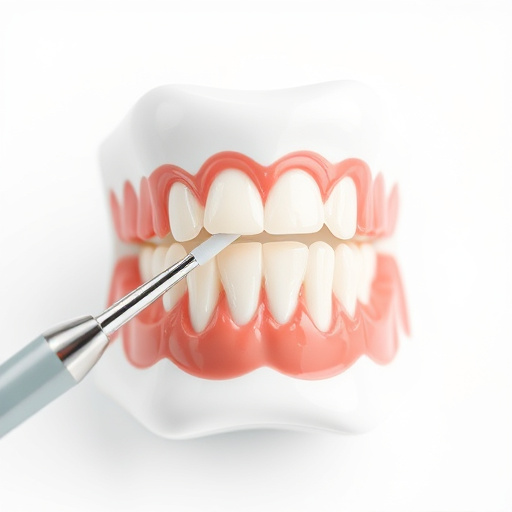The adoption of intraoral camera examinations has revolutionized general dentistry by providing high-resolution visual data, enhancing diagnostic accuracy and treatment planning precision compared to traditional 2D X-rays. This technology allows dentists to access and visualize hard-to-reach areas, improving care in emergency, pediatric, and cosmetic dentistry. By capturing detailed oral cavity images, intraoral cameras facilitate patient communication, empowering them to understand their oral health status and actively participate in treatment decisions for complex procedures.
Intraoral camera examinations are revolutionizing dental documentation, offering unprecedented visual accuracy and detail. This advanced technology captures intricate oral structures, enhancing patient communication and understanding. The clear, high-resolution images facilitate remote consultations and seamless record-sharing, enabling dentists to collaborate effectively. By detecting early caries, identifying lesions, and tracking dental conditions over time, intraoral cameras support informed clinical decision-making and treatment planning. Embracing these best practices ensures optimal implementation, integrating images into electronic health records for efficient access and review.
- Advantages of Intraoral Camera Examination for Documentation
- – Improved visual accuracy and detail
- – Enhanced patient communication and understanding
Advantages of Intraoral Camera Examination for Documentation
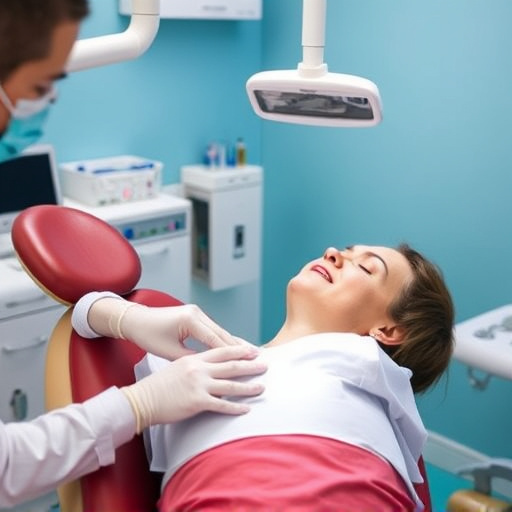
The introduction of intraoral camera examination has revolutionized documentation practices in general dentistry. This advanced technology offers several advantages over traditional methods, enhancing the accuracy and detail of dental records. One of its key benefits is the ability to capture high-resolution images of teeth, gums, and oral structures from a patient’s perspective. Dentists can now examine hard-to-reach areas with ease, ensuring comprehensive documentation for both routine check-ups and complex procedures like cosmetic fillings or dental crowns.
Furthermore, intraoral cameras provide an objective visual record, reducing the subjectivity often associated with manual examinations. This precision allows for more consistent and precise diagnosis and treatment planning. By integrating this technology into practice, dentists can improve patient care through detailed documentation, enabling better communication with specialists and facilitating informed decision-making for procedures such as dental crowns.
– Improved visual accuracy and detail
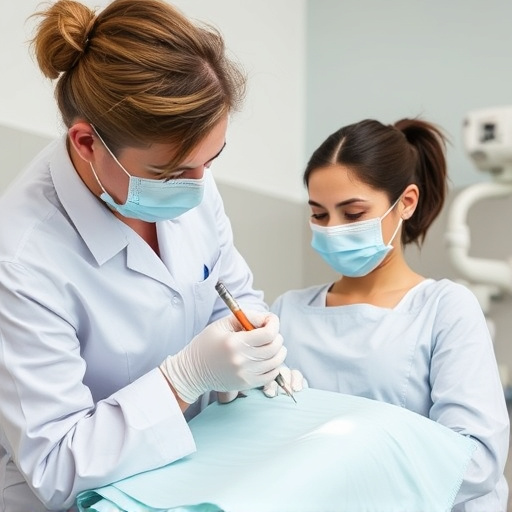
One of the most significant advantages of intraoral camera examination is the profound improvement in visual accuracy and detail it offers. Unlike traditional dental X-rays, which provide a 2D projection, intraoral cameras capture high-resolution, digital images from within the mouth. This technological advancement allows dentists to see areas that are often difficult to visualize with regular tools, such as the occlusal surfaces of teeth, gingival margins, and oral soft tissues. The resulting images display intricate details, enabling precise diagnosis and treatment planning, even for complex dental conditions.
In various dental practices, including emergency dental care, children’s dentistry, and cosmetic dentistry, intraoral camera examination plays a pivotal role in enhancing documentation accuracy. Dentists can now capture and review images immediately, ensuring that every aspect of a patient’s oral health is meticulously documented. This not only facilitates better communication with patients but also serves as valuable evidence for insurance claims or future references, ultimately leading to more effective and tailored dental care.
– Enhanced patient communication and understanding
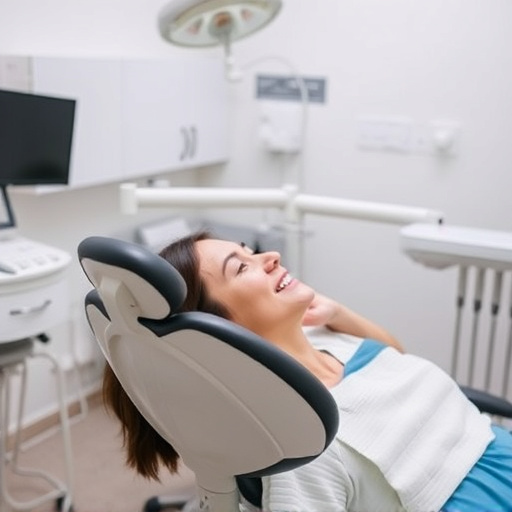
One of the significant advantages of intraoral camera examinations is its impact on patient communication and understanding. This advanced technology allows dental professionals to capture detailed, high-resolution images of a patient’s oral cavity, providing a clear and comprehensive view of their teeth and gums. By utilizing an intraoral camera, dentists can effectively show patients specific areas of concern, such as decayed tooth surfaces or gum inflammation, enhancing the overall transparency of the examination process.
This visual approach facilitates better communication between dentist and patient, ensuring everyone is on the same page regarding the current oral health status. Patients can now actively participate in their dental care decisions by clearly seeing what the dentist sees. This is especially beneficial for complex procedures like dental bonding or tooth extractions, where a clear understanding of the treatment area is crucial for accurate documentation and successful outcomes.
The intraoral camera examination is a game-changer in dental documentation, offering improved visual accuracy and detail compared to traditional methods. By providing clear, high-resolution images, it enhances patient communication and understanding, ensuring everyone involved has a comprehensive view of the oral cavity. This technology supports more precise diagnoses and treatment planning, making it an invaluable tool for modern dental practices.

